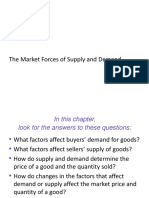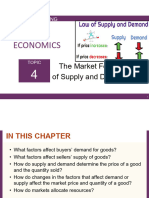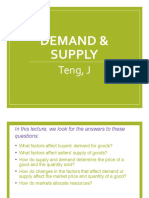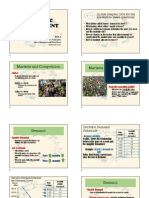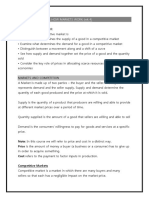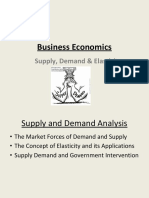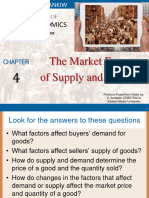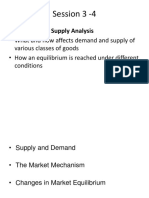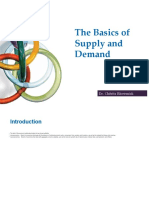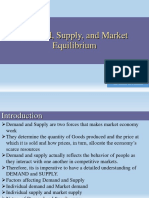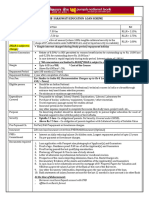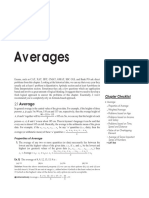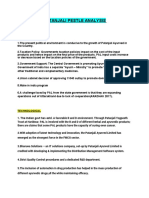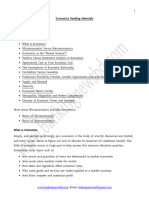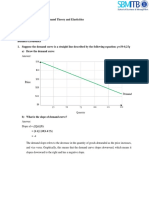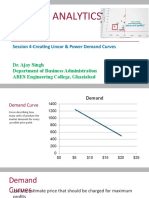0% found this document useful (0 votes)
27 views49 pagesLecture 3
- The document discusses the economic concepts of supply and demand. It addresses factors that affect supply and demand, how supply and demand determine price and quantity, and how markets allocate resources.
- Supply and demand are determined by the interactions of buyers and sellers in a market. The quantity demanded reflects what buyers are willing and able to purchase at different prices, while quantity supplied reflects what sellers are willing and able to sell.
- Supply and demand curves illustrate the relationships between price and quantity. When supply or demand shifts, it changes the market equilibrium price and quantity. Markets aim to efficiently allocate scarce resources.
Uploaded by
Ridhtang DuggalCopyright
© © All Rights Reserved
We take content rights seriously. If you suspect this is your content, claim it here.
Available Formats
Download as PDF, TXT or read online on Scribd
0% found this document useful (0 votes)
27 views49 pagesLecture 3
- The document discusses the economic concepts of supply and demand. It addresses factors that affect supply and demand, how supply and demand determine price and quantity, and how markets allocate resources.
- Supply and demand are determined by the interactions of buyers and sellers in a market. The quantity demanded reflects what buyers are willing and able to purchase at different prices, while quantity supplied reflects what sellers are willing and able to sell.
- Supply and demand curves illustrate the relationships between price and quantity. When supply or demand shifts, it changes the market equilibrium price and quantity. Markets aim to efficiently allocate scarce resources.
Uploaded by
Ridhtang DuggalCopyright
© © All Rights Reserved
We take content rights seriously. If you suspect this is your content, claim it here.
Available Formats
Download as PDF, TXT or read online on Scribd
/ 49
